Loose Parts Play: It’s Easier Than You Think!
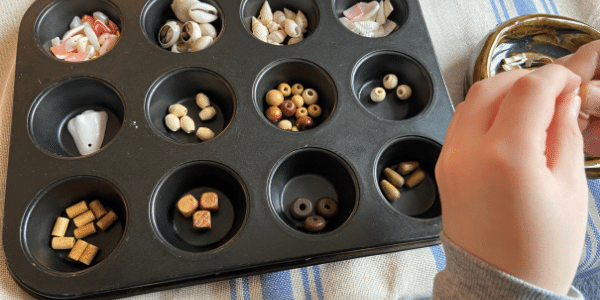
What is Loose Parts Play?
Have you ever watched children organize random materials in meaningful ways? Have you seen them take rocks in the outdoor play area and order them by size? How about the time they stacked the cups as they helped set up for snack? Or when they gathered leaves and sticks and created designs in the dirt? Have they ever emptied your recycling bin and created towers? These are all examples of loose parts play.
Loose parts are, quite simply, open-ended, and versatile materials that can be used in a variety of ways. They can be found, bought, taken out of your recycling bin, or even taken from other art projects and repurposed. With loose parts, children use their imaginations to create in endless ways. Children inherently know how to use loose parts and are drawn to them. They don’t need lessons or directions about how to use them.
Loose parts have endless educational benefits and possibilities. From a very young age, children can use loose parts to explore concepts such as sorting and ordering. In one of our recent sensory play classes, a two-year-old independently sorted pom poms and erasers by color, a skill that her caregivers didn’t realize she possessed. As children get older, and continue their play with loose parts, they build and develop scientific reasoning, problem solving, fine motor skills, creativity, language acquisition, social and emotional growth, and more.
Loose Parts Play Examples
When offering children loose parts, set them out in inviting ways, such as placing alike objects in bowls. These loose parts can be used independently or in conjunction with other toys or materials. For instance, in our classroom we had a play kitchen area. It was stocked with toy pots and pans, some cooking utensils, and some small plates, bowls, and cups. Along with these fairly specific-use toys, we set out one bowl filled with pouch tops, one filled with small, crocheted orange circles, and another filled with corks. The children used these loose parts in so many different ways, and each child seemed to have a unique spin on how to use the pieces. One child wrapped up pouch tops in the crocheted circles and told us she was making dumplings, something her family ate often. Another child said he was making pancakes and pretended to fry up one of the circles. And another child took the corks and pretended she was eating popcorn. She told us she added cheese and extra salt.
In another area of our classroom, we set out bowls of buttons in different colors and sizes, along with sorting trays (plastic trays with individual compartments). These were placed on top of our light table.
One child began making lines of buttons. At first, she lined up random buttons, and then she began sorting them by color. Finally, she started making lines of buttons in size order, from largest to smallest. It was amazing to see all the ways she thought to organize these buttons, without any input from teachers about what she should do.
Another child used the buttons completely differently. He first put one button in each square of the sorting tray. After filling his tray, he spontaneously started sorting the buttons and adding similar buttons to each square.
Putting Loose Parts Play into Practice
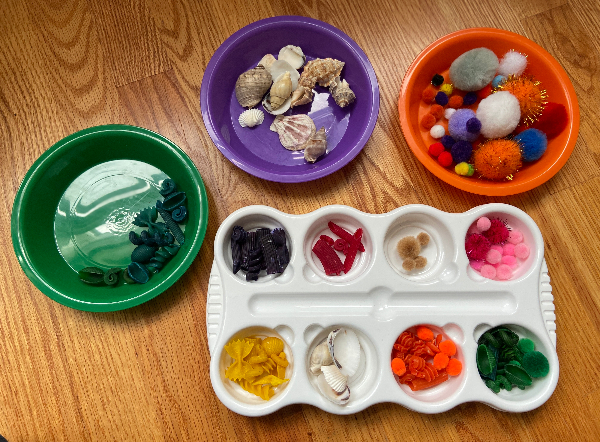
From these and other observations we saw these skills in practice:
Problem Solving: “This button is larger than the one before it, but I’m making my line of buttons get smaller and smaller. I’ll choose a different button.”
Fine Motor Development: Children used their pincer grasps to pick-up and place these tiny buttons
Language Growth: Children talked to each other about what they were doing
Social And Emotional Growth: Children helped each other find the right buttons and offered support when friends grew frustrated if their plans did not work
Getting Started with Loose Parts Play
What loose parts can I find at Becker’s?
What loose parts can I find from home or in nature?
- Pouch tops
- Egg cartons
- Yogurt cups and tops
- Acorns
- Leaves
- Sticks
- Rocks
- Seeds
- Shells
Try This—Put Loose Parts Play into Action!
Now it's time to put loose parts play into action in your classroom!
![]() Set out containers that invite sorting, such as egg cartons, muffin tins, ice cube trays, measuring cups, or bowls.
Set out containers that invite sorting, such as egg cartons, muffin tins, ice cube trays, measuring cups, or bowls.
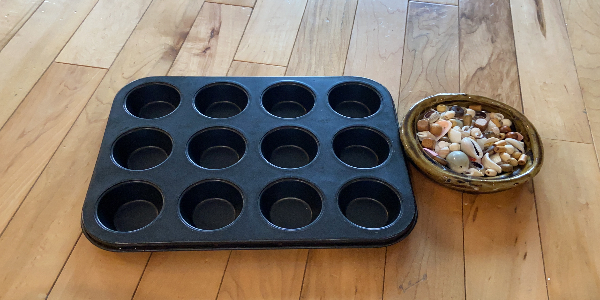
![]() Place loose parts out with more traditional materials. See what happens with loose parts in these areas of the classroom: dramatic play, blocks, art center.
Place loose parts out with more traditional materials. See what happens with loose parts in these areas of the classroom: dramatic play, blocks, art center.
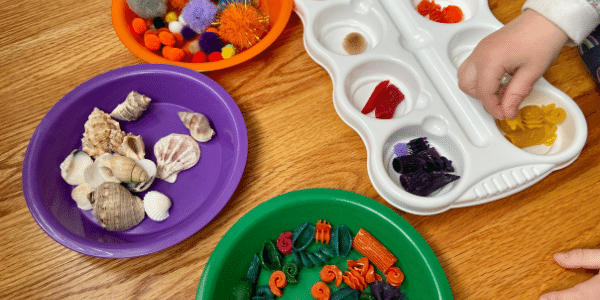
Toddlers and Loose Parts Play?
Working with babies or young toddlers who still mouth objects? You can still use loose parts! Try incorporating larger items such as large pouch tops, rings from Mason jars, very large pom poms, soft balls in various sizes, larger recyclable materials, or other larger objects.
Loose parts play is a great way to encourage children to explore a variety of concepts with easily accessible materials that you probably already have around your classroom or home. Set up some loose parts today and see how your children dig in!
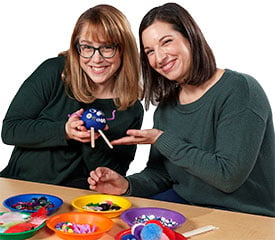
With over 30 years of combined teaching experience between them, early childhood educators Nicole Werther and Rachel Miller know just how to keep your young children engaged—let them take the lead! Their small business, Backyartists, encourages creative thinking and discovery through the magic of process art and sensory play.
Rachel and Nicole are Becker's Creative Arts Content Advisors and have used their knowledge of process art to create resources, such as blog posts and activity ideas, to inspire teachers and parents when planning projects with the Artful Goods materials.
They also offer playgroups and classes in the Boston area. Check out Backyartists.com for the most up to date offerings.
